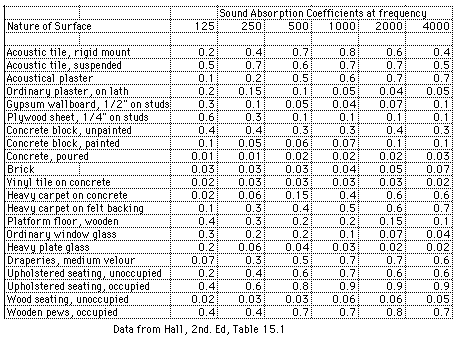Sound Absorption Coefficient
When a sound wave in a room strikes a surface, a certain fraction of it is absorbed, and a certain amount is transmitted into the surface. Both of these amounts are lost from the room, and the fractional loss is characterized by an absorption coefficient a which can take values between 0 and 1, 1 being a perfect absorber.
Absorption coefficient = a
Effective absorbing area = aS
The effective absorbing area is a factor in determining the reverberation time of an auditorium. The absorption coefficient of a surface typically changes with frequency, so the reverberation time is likewise frequency dependent. A table of absorption coefficients can be used in calculations of reverberation time with the Sabine formula.
|
Index
Auditorium acoustics |





